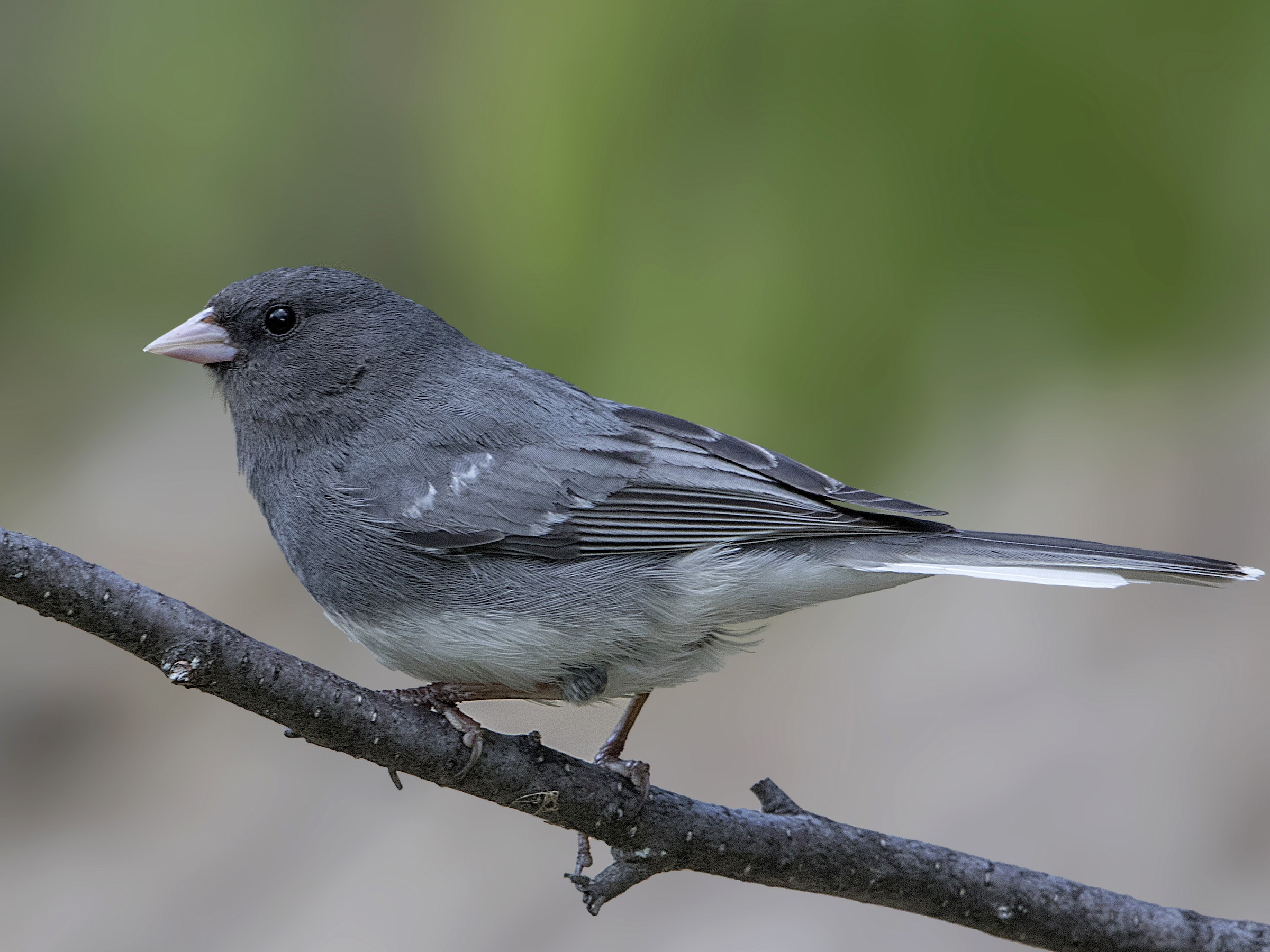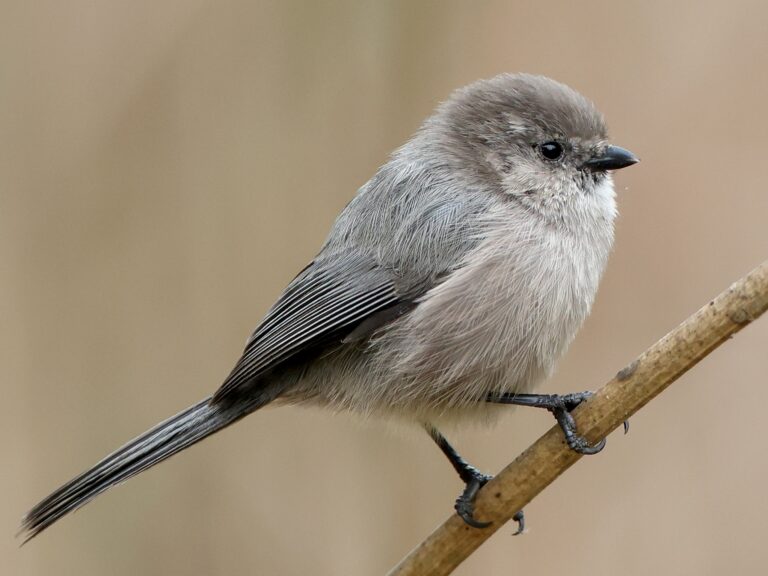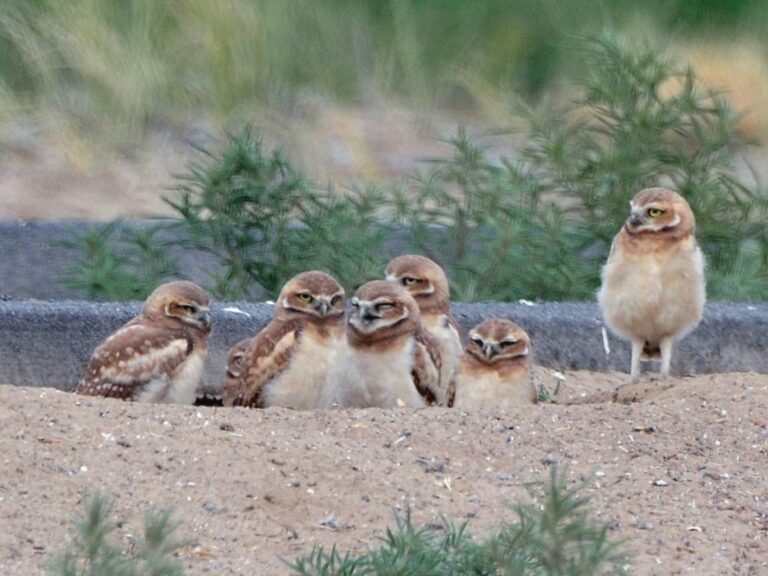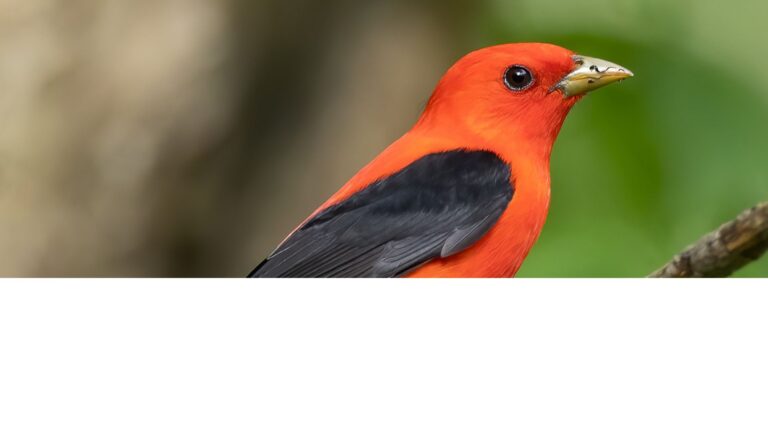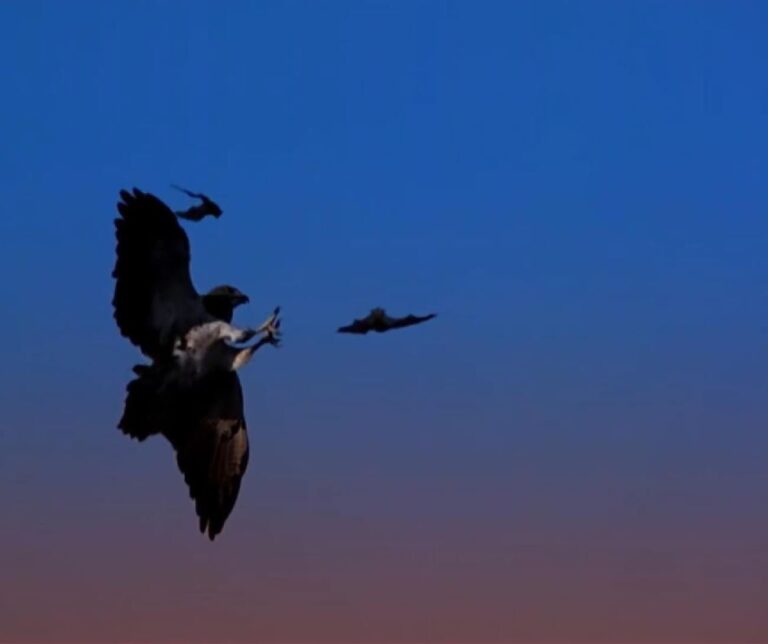25 Birds of Northwest Washington: Essential Species to Spot in the Region
The Pacific Northwest is home to a huge range of birds, making it a favorite spot for both casual birdwatchers and more serious enthusiasts. With forests, wetlands, and coastal stretches, northwest Washington is just packed with chances to see all sorts of bird species, no matter the season. With our list of the most popular 25 birds of northwest Washington you’ll learn about just a few.
Learning about the most common and unique birds in this area helps people recognize local wildlife and get more out of time outdoors. If you want more details or tips for identification, check out resources like the Backyard Birds of Washington guide or the List of birds of Washington (state).
Anna’s Hummingbird
Anna’s Hummingbird stays in northwest Washington all year long. Unlike most hummingbirds, it doesn’t bother to migrate when the weather gets cold.
It survives chilly nights by entering a deep-resting state called torpor. Females and young birds show more white than the flashy adult males.
Learn more from Wikipedia.
Steller’s Jay
Steller’s Jay stands out in northwest Washington with its bold crest and deep blue feathers. You’ll spot it often in forests, especially where evergreens grow thick.
This bird can mimic other animals, even hawks, and it’s known for being curious and sometimes pretty loud. Learn more at Audubon Field Guide.
Black-capped Chickadee
For more info, visit BirdWeb.
Dark-eyed Junco

Hermit Thrush
The Dark-eyed Junco is a small sparrow you’ll see often in northwest Washington. It has a rounded head, a short pink bill, and a long tail with white edges.
Its colors usually mix gray, white, and tan. Learn more about the Dark-eyed Junco here.
American Goldfinch
The American Goldfinch is a small finch with a stubby, cone-shaped bill and a notched tail. Males turn bright yellow in summer with black wings and a black forehead.
You’ll spot this bird in northwest Washington backyards, where it loves to snack on seeds. More at All About Birds.
Downy Woodpecker
The Downy Woodpecker is North America’s smallest woodpecker. It wears black and white feathers and has a short, stubby bill.
They hang around northwest Washington all year and show up often in parks and backyards. Learn more at the Audubon Field Guide.
Hairy Woodpecker
The Hairy Woodpecker is a medium-sized bird you’ll find in forests throughout northwest Washington. Its black-and-white body and longer bill set it apart from the Downy Woodpecker.
Males show a small red patch on the back of their heads. Learn more from All About Birds.
Northern Flicker
The Northern Flicker is a big, brownish woodpecker you’ll see often in northwest Washington. It flashes a white rump in flight and has black spots on its belly.
It’s common in parks, gardens, and open woods. Learn more about the Northern Flicker here.
Western Bluebird
The Western Bluebird is a small thrush that hangs out in open woodlands across northwest Washington. Its back is deep blue, and its chest is rusty-orange.
Males are brighter, while females look more muted. They nest in tree holes and eat insects and berries. Learn more at the Washington Department of Fish & Wildlife.
Mountain Bluebird
The Mountain Bluebird is a small thrush; males are bright sky-blue, and females show more grayish-blue. They mostly live and breed east of the Cascade Mountains in Washington.
You’ll spot them in open meadows and fields. For more, see BirdWeb.
Townsend’s Solitaire
Townsend’s Solitaire is a songbird you’ll find in mountain forests. It’s gray with a white eye ring and has buffy patches on its wings.
It eats berries and insects. Learn more from Cornell Lab of Ornithology or eBird.
American Robin
The American Robin is a chunky songbird with a round body, long legs, and a rusty-orange breast. It’s everywhere in northwest Washington, especially on lawns hunting for worms.
Learn more at the Cornell Lab of Ornithology website.
American Crow
The American Crow is all over northwest Washington—in towns, fields, forests, and shorelines. Its loud “caw” is pretty hard to miss.
Crows have shiny black feathers and are about the size of a pigeon. They’re clever and even use tools. Learn more at BirdWeb.
Belted Kingfisher
The Belted Kingfisher is a chunky bird with a big head and a wild, shaggy crest. Its thick, pointed bill really stands out.
Look for them near rivers and lakes, where they dive for fish. Both males and females stick around northwest Washington year-round. Learn more from All About Birds.
Pileated Woodpecker
The Pileated Woodpecker is the biggest woodpecker in northwest Washington, reaching about 17 inches long. Its mostly black body has bold white stripes down the neck.
Both sexes wear a bright red crest. These woodpeckers like mature forests with big trees. For more details, visit Washington Department of Fish & Wildlife.
American Dipper
The American Dipper is a round, gray bird you’ll find along fast-moving streams in western Washington. It often bobs up and down on rocks near water.
Watch for it year-round in mountain streams and some forested lowlands. To learn more, visit the Audubon Field Guide.
Bewick’s Wren
Bewick’s Wren is a tiny bird with a long tail and a bold white eyebrow. Its back is brown, and its belly is pale gray.
This wren likes drier, more open spots. Learn more at eBird and Birds of the World.
Swainson’s Thrush
Swainson’s Thrush is a common songbird in northwest Washington’s forests, especially in spring and summer. Its clear, rising song is a classic sound of the woods.
This bird migrates—breeding in North America and heading to South America for winter. Learn more at BirdWeb and Cornell Lab.
Veery
The Veery is a small, spot-breasted thrush with a reddish-brown back and pale underparts. You’ll often hear its gentle, flute-like song in forests during spring and summer.
This bird prefers dense, moist woods. More about the Veery is on BirdWeb.
Black Oystercatcher
The Black Oystercatcher is a big, all-black shorebird that hangs out on northwest Washington’s rocky coasts. Its bill is bright reddish-orange, and its legs are pale pink.
You’ll usually see them in small groups. For more details, visit BirdWeb’s page.
Snowy Plover
The Snowy Plover is a small, sand-colored shorebird seen on certain northwest Washington beaches. They nest right on the sand and are hard to spot.
This species is listed as threatened and endangered in Washington, with fewer than 100 left in the state. Learn more at Washington Department of Fish & Wildlife.
Northern Shoveler
The Northern Shoveler stands out with its big, spoon-shaped bill. Males show bright colors, while females look more brown and plain.
Find this duck in shallow wetlands and grassy fields, where it sifts water for food with that odd bill. Learn more at All About Birds.
Great Blue Heron
The Great Blue Heron is one of the biggest birds in northwest Washington, standing over three feet tall with a six-foot wingspan. Its body is slate-gray with long legs and a long neck.
You’ll see it near rivers, lakes, and coastal zones. Learn more from the Northwest Wildlife Preservation Society.
Green Heron
The Green Heron is a small, secretive wading bird you’ll mostly spot in wetlands from April through October. It’s not easy to see.
Its feathers are dark with a greenish back and crown. Learn more about the Green Heron at BirdWeb.
American Wigeon
The American Wigeon is a small duck with a round head and short bill. Males usually have a reddish-brown body and a grayish head, while females look plainer.
You’ll find them in wetlands, ponds, and fields from fall through spring. More about the American Wigeon at All About Birds.
Habitats of Northwest Washington
Birds in northwest Washington live in all sorts of places—wetlands, forests, city parks, even backyards. Every habitat offers different food, shelter, and nesting options, drawing in a unique mix of birds.
Wetlands and Shorelines
Wetlands and shorelines are crucial for birds here. These spots include marshes, estuaries, rivers, and Puget Sound’s coastal stretches.
Lots of water-loving birds—like Great Blue Herons, Mallards, and Belted Kingfishers—depend on these areas for feeding and nesting. In wetlands, birds find insects, fish, and plants, while thick reeds and shrubs keep them safe from predators.
During migration, shorelines fill up with flocks of sandpipers, gulls, and ducks. Tide pools and mudflats along the coast draw shorebirds like Black Oystercatchers and Killdeer.
Salt marshes support Marsh Wrens and Red-winged Blackbirds. If you’re curious, the Washington Department of Fish and Wildlife has guides on local wetlands.
Forests and Woodlands
Forests and woodlands cover a lot of northwest Washington, from damp coastal woods to drier conifer forests inland. Evergreen trees, ferns, and thick undergrowth give birds plenty of places to hide or nest.
Birds like Varied Thrushes, Pacific Wrens, and Northern Flickers are common. Old trees provide nesting holes, and the forest floor is full of insects and seeds.
Owls, woodpeckers, and finches also depend on these woods for food and shelter. Some forests, like the temperate rainforests of the Olympic Peninsula, are especially rich in bird life and stay green through winter.
For more, see the Seattle Audubon Society and their local habitat guides.
Suburban and Urban Environments
Birds have really adapted to neighborhoods, parks, and gardens in northwest Washington. Even with fewer native plants, these places still support a lot of species.
Bird feeders, shrubs, and trees attract birds right up close. Common city birds include American Robins, Black-capped Chickadees, and Anna’s Hummingbirds.
Some, like European Starlings and House Sparrows, nest on buildings or use birdhouses. Parks with ponds bring in ducks, geese, and crows.
Just adding native plants or a birdhouse can make a yard much more bird-friendly. For tips, check the National Audubon Society’s native plants database.
Seasonal Bird Migration Patterns
Bird migration in northwest Washington follows a pretty regular rhythm each year. Some birds breed here, others stop by during migration, a few spend winter, and some just never leave.
Spring Arrivals
When spring hits and food returns, lots of birds come back to northwest Washington. Typical spring migrants are warblers, swallows, and shorebirds.
According to The Nature Conservancy, shorebirds only pause in Washington for a short window during spring and fall migration.
Migration usually starts about 30–45 minutes after sunset, peaking a couple hours later (BirdCast Dashboard). Birds like violet-green swallows, rufous hummingbirds, and yellow-rumped warblers arrive from the south.
Trees and wetlands suddenly fill with new calls and activity as these birds settle in to nest and raise young.
Key Spring Migrants:
- Violet-green Swallow
- Rufous Hummingbird
- Yellow-rumped Warbler
- Western Sandpiper
Winter Residents
As temperatures drop, lots of northern species show up to spend winter in northwest Washington. Typical winter visitors include snow geese, trumpeter swans, and all sorts of ducks.
Fields and estuaries become busy feeding grounds. Dark-eyed juncos and fox sparrows flock to feeders and brushy patches.
Other birds, like Bald Eagles, gather along rivers to eat spawning salmon. Some, like rough-legged hawks, only appear in the coldest months.
Key Winter Species:
- Snow Goose
- Trumpeter Swan
- Dark-eyed Junco
- Bald Eagle
Year-Round Species
Some birds stick around northwest Washington all year. Black-capped Chickadees, Northern Flickers, and American Crows are always here, adjusting what they eat or where they forage as the seasons change.
Backyard feeders attract house finches and song sparrows no matter the month (Washington State Backyard Feeder Birds). Even in winter, Steller’s Jays and Anna’s Hummingbirds stay active.
These birds just seem to roll with the weather, thriving in forests, yards, and city parks.
Common Year-Round Birds:
| Species | Typical Habitat |
|---|---|
| Black-capped Chickadee | Woodlands, backyards |
| Northern Flicker | Forest edges, yards |
| American Crow | Towns, farmlands |
| Steller’s Jay | Forests, suburbs |
Frequently Asked Questions
Birdwatchers in northwest Washington often want solid guides, advice for telling similar birds apart, and tips for spotting or photographing local favorites like Anna’s Hummingbird or Steller’s Jay. Lots of folks are curious about migration, seasonal changes, and where to learn more.
What field guides are recommended for identifying birds in the Northwest Washington area?
“Birds of the Pacific Northwest” by John Shewey and the “Sibley Field Guide to Birds of Western North America” are both popular. Both have clear pictures and good regional info. The Cornell Lab of Ornithology’s website also has digital ID tools if you prefer online resources.
How can I differentiate between similar small bird species common to the Pacific Northwest?
Watch for details like beak shape, wing markings, and head patterns. For instance, Black-capped Chickadees have white cheek patches, while Chestnut-backed Chickadees have rusty backs. Listening to their calls can help too, though sometimes it takes a little practice.
Which native bird species are most commonly seen in Northwest Washington habitats?
Anna’s Hummingbird, Steller’s Jay, Black-capped Chickadee, Dark-eyed Junco, and American Goldfinch are all common. You’ll spot them in backyards, parks, and forests year-round. Mourning Doves and Northern Flickers show up everywhere too.
What resources are available for learning about the migratory patterns of birds in Western Washington?
The Washington Department of Fish & Wildlife shares info on migration in the region. The eBird website tracks real-time migration and sightings. Local Audubon Society chapters post updates and sometimes host bird walks.
How do seasons affect the variety of bird species visible in the Pacific Northwest?
Spring and fall bring in lots of migrants, so diversity spikes. Summer is great for watching residents nest and feed chicks. Winter brings waterfowl and some raptors from the north, while a few species like Anna’s Hummingbird just stick around all year.
Can you provide tips for photographing birds in their natural environment in Northwest Washington?
Use a camera with a zoom lens so you don’t have to get too close. Early morning or late afternoon gives you the best light. Move slowly, wear neutral colors, and maybe try sitting quietly or using a blind—birds will come closer if you’re patient.
